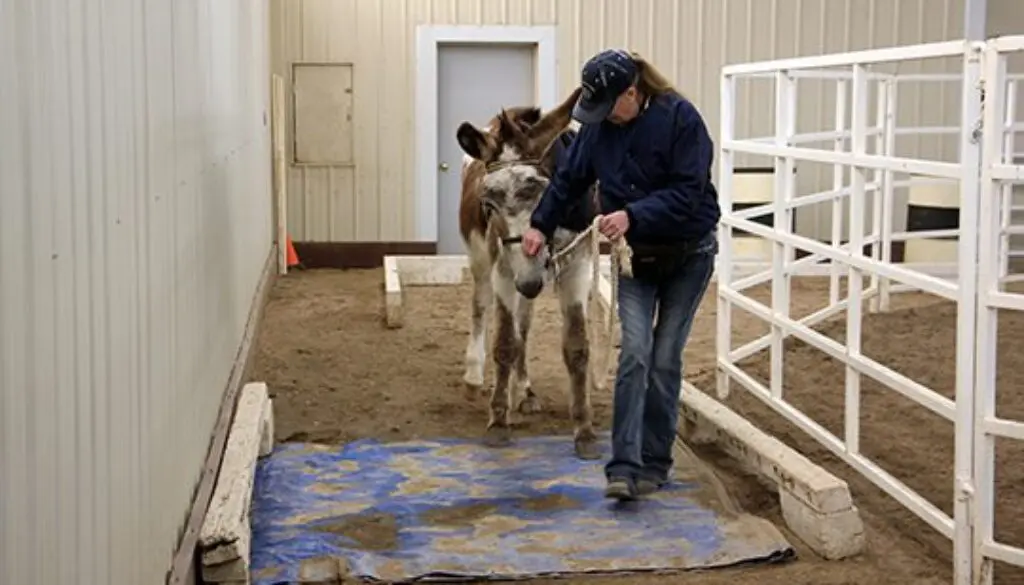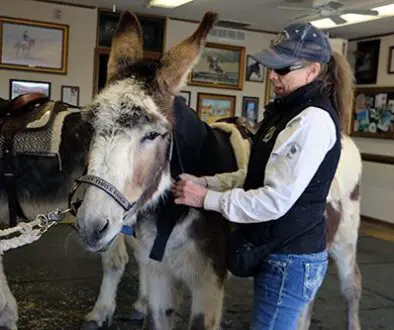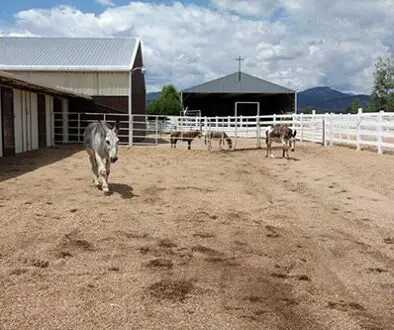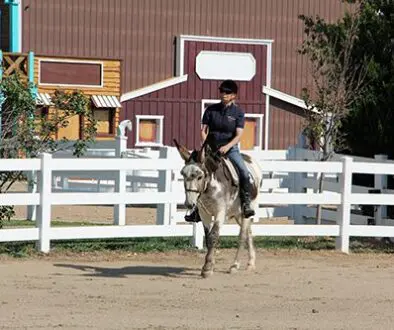CHASITY’S CHALLENGES: Obstacles for Coordination: 4-14-20
4-14-20
After doing her Hourglass Pattern exercises, first one way and then the other, we opted to add some variety to the workout by adding some straight forward obstacles. In our indoor arena, I have an open space of 60’ X 120’ and a 45’ round pen at the end of the arena in another 60’ X 60’ fenced off space. Around the outside perimeter of the round pen in that area, I put my obstacles. I have found that there is less margin of error learning obstacles in a confined space to add coordination to their core strength in good equine posture. They can learn to pay more attention and to be more meticulous in their execution of the obstacles. This is a helpful way to begin with obstacles. The first obstacle for Chasity was the gate!


After going through the gate and standing stock still while I latched it, we proceeded to the bridge. I was pleasantly surprised when she allowed me to stop her with only her front feet on the bridge. This is generally a Stage Two move in my program since obstacles are used for coordination. Most equines are so uncoordinated that they just want to keep walking over and through the obstacles without stopping at first. Good for Chasity!


Chasity then carefully walked up onto the bridge with all four feet and halted on command! This was going much better than I had expected!


When I asked her to square up, she got a bit skewed to the side on the bridge, but she was nevertheless squared up, just not in line with the bridge. So I took it and rewarded her effort.We can do better the next time.


Then we got off the bridge and I squared her up again. Then…I introduced her to the tractor tire.


She looked at it…wasn’t afraid of it…walked around it…


…and looked at it again. She was clearly NOT going to put her foot in the middle of that tire! I decided to quit while we were ahead and try again next time. Because I didn’t push her, she consented to walking through the smaller tires…


…tentatively, but she did it! And then she walked around the barrels with no trouble at all!


Just having Chasity navigate these obstacles without being afraid of them was a major accomplishment. We then walked into the back-through “L” and I decided to make it a little bit tougher.


After walking through the “L” forward, I asked Chasity to back through where she had come.


She was a bit perplexed, but slowly backed between the rails, made the turn at the elbow, and went straight back from there with very little forcible encouragement.


Once at the end of the back-through “L,” we headed for the tarp. She followed me obediently, but was so silly…


When we got to the tarp, she wanted to walk EXACTLY where I walked! I guess she KNEW it was safe there! Too funny!


I gave her a reward because she really didn’t balk and we proceeded out of the obstacle area.


As we left, we executed the gate correctly and she was rewarded again. She stood quietly until I was ready to move.


Then we proceeded down the arena wall towards the exit gate and stopped to turn off the lights. She was a little surprised that the wall opened up, but stood still while I opened the door and turned off the lights.


Then I closed the door and we exited the arena. Adding obstacles and simple expectations to her regular work in the Hourglass Pattern made the experience more interesting and engaging to Chasity. When you add new things to their lessons, you shouldn’t feel like the equine has to do it right the first time. Just quit while you are ahead and your equine WILL do better the next time! There is no battle to remember!


Beginning by negotiating obstacles in larger areas makes for a larger margin for error. Too many things can go wrong and lead to an unpleasant chain of negative events that suck you and your equine into unnecessary altercations. There is plenty of time to do them in the more open spaces once they have learned how to negotiate them in the smaller spaces. I first school green animals during ground driving and under saddle in the small open area of my indoor arena (60’ X 120” – Standard Small Dressage Arena Size) before I take them into the larger outside arenas. This has resulted in a decrease of bolting and running. When you set up your training environment, it is always optimal to set up the equine for success!






